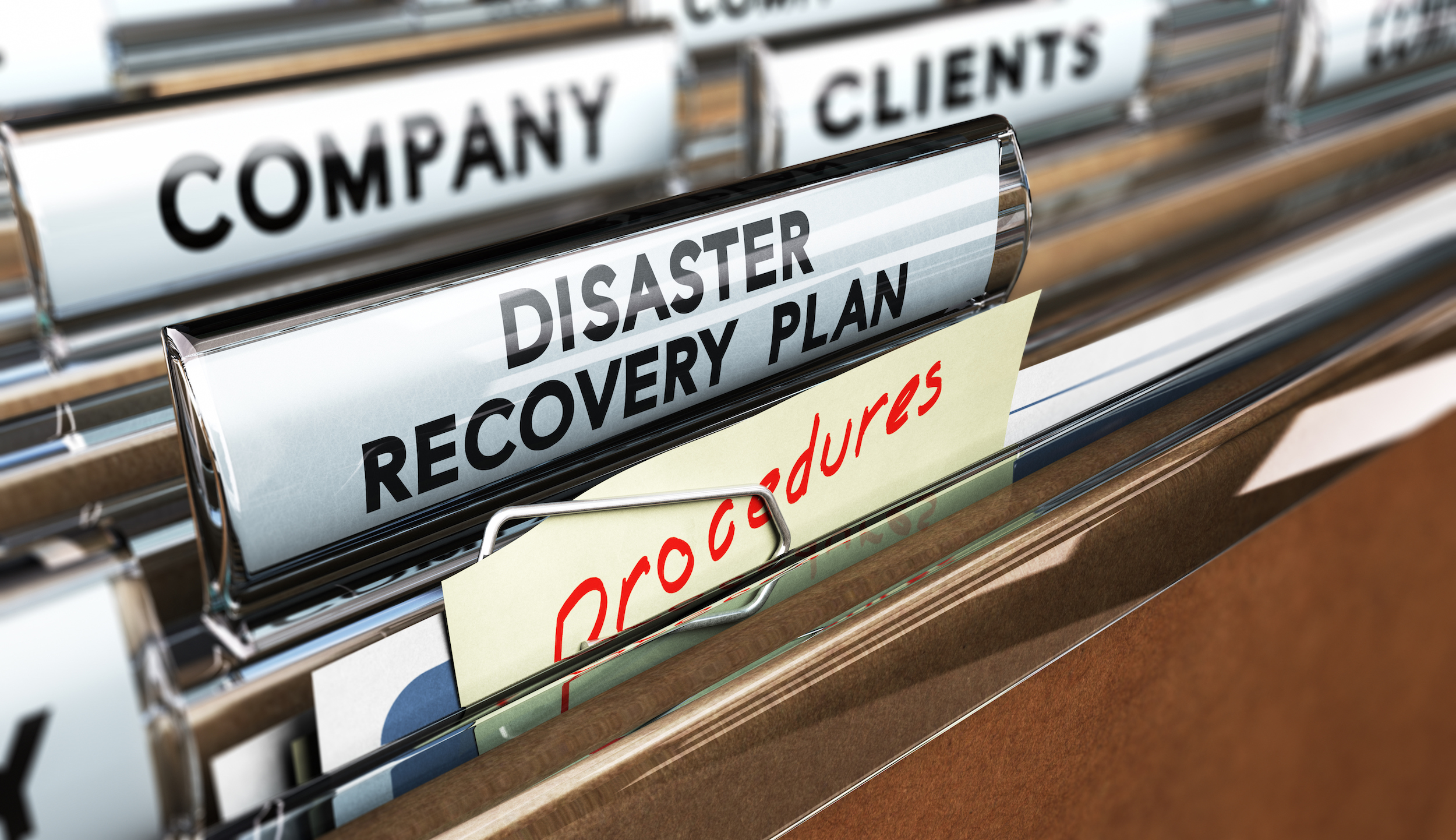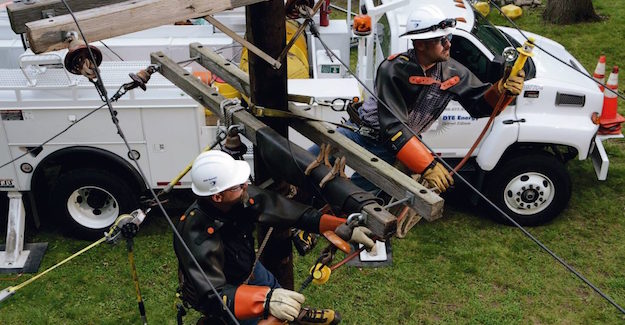
Crisis Converted: A DTE Energy Social Media Case Study
By: Brandon Chesnutt
When strong winds, with gusts in excess of 60 mph, blew through Southeast Michigan in early March, the result was something that DTE Energy called the most significant weather event in its 150-year history.
The storm may have been historic, but its impact on infrastructure across the region was truly catastrophic. The March 8th storm downed approximately 12,000 power lines (a remarkable 20 times the number you would typically expect in a severe storm), and left one million residents without power–some for up to five days.
Approximately 800,000 of those left in the dark were DTE Energy customers.
A damaging and disruptive storm of this magnitude obviously presented some formidable logistical challenges to DTE Energy’s restoration crews – especially the linemen and tree trimmers who were working virtually around the clock – but it also put unprecedented stresses on DTE social media and communications teams, who were faced with an almost overwhelming volume of online questions and concerns.
Addressing those concerns and responding to customer inquiries was a priority, as was providing critical information about safety tips and additional resources. As if that wasn’t difficult enough, DTE had to do all that while simultaneously working to protect the brand and adeptly charting a course through an event that could leave a potentially damaging– and lasting–effect on public perception.
Here at Identity, we work closely with many of our clients and professional partners to help navigate through the stormy seas of a social media crisis, and we were impressed by the professionalism and creativity of DTE’s social media and communications team both during and after the week of the storm.
We reached out to DTE Social Media Specialist David Lingholm to get a better sense of how DTE dealt with this crisis. David gave us a unique behind-the-scenes look at what was going on during the storm and its aftermath, and he shared some of the challenges, successes, and lessons learned for the future that DTE is already working to implement.
David’s insights give a fascinating glimpse of the perils and pressures of crisis response in real time, and provide some valuable lessons that other brands and businesses can apply to their own operations.
All hands on deck
“Just to set the stage,” explained David, “from a social media and communications perspective, this was like nothing we’d ever seen.”
DTE’s volume of inbound inquiries and brand mentions spiked from a daily average of 148 to 2,759 on the first day of the crisis.
By the second day, DTE was getting 177 brand mentions an hour (and that doesn’t even include Facebook).
“We had more brand mentions from March 8th to March 16th than we did all year up to that point. Perhaps unsurprisingly, DTE’s website went down due to a high volume of traffic, similar to levels seen during a DDoS attack.”
This was obviously an extreme and unusual situation. As David explained, however, DTE had previously spent a great deal of time drilling and preparing for emergencies of this nature. When it came time for people to step in and step up, that structure, training and preparation helped. That said, the scale of this event was such that no amount of training could prepare the DTE team for what they were facing.
David explained that solving the manpower challenge took some creativity–and no small dose of “all hands on deck” enthusiasm.
“To boost our ability to respond to customer inquiries that were coming through, we had 19 people working on our customer service team, along with nearly two dozen additional personnel brought in from corporate communications.” At one point, DTE had members of its graphic design team answering questions on Twitter.
Of course, bringing in those emergency personnel raised its own set of challenges: making sure that the posts were written in the right tone and in alignment with DTE’s standards and practices.
“We had some approved language with talking points and suggested messaging, but we also encouraged everyone to personalize their responses as much as possible. One of the things we tried to do was have an experienced social media ‘coach’ on hand to scan and sign off on tone and content as much as possible.”
DTE determined that the need to communicate and respond to questions and concerns as quickly as possible was a priority.
“While it was physically impossible to respond to everyone, we did the very best we could,” says David. What emerged was a kind of triage strategy, where DTE employees worked to answer the questions they could answer accurately as quickly as possible.
DTE also leaned heavily on their blog to disseminate information, directing customers to visit the site and posting personal and food safety tips, as well as regular updates on the restoration work.
Lessons learned
Preparedness and detailed training left DTE better equipped than most companies to respond in a crisis. But the ability to react and respond to events as they evolve in real time is also essential.
Flexibility and responsiveness was not only critical in addressing staffing and manpower issues, but with shaping messaging as the week went on. For example, grumbling online from the small number of customers whose repair/restoration estimates turned out to be inaccurate necessitated additional language about cautioning customers to confirm that power has been restored before returning home.
The power of storytelling is something else that became clear to David and his team as the crisis unfolded: “The way we talked about what was going on was just as important as the information itself that we were imparting to our customers. It was essential to get that right: to craft our video and images and messaging carefully.”
As DTE discovered, it wasn’t enough to tell their story and keep their customers informed, they had to do it the right way. A big part of that is personalizing the message.
On the face of it, the numbers detailing DTE’s unprecedented response were impressive: 1 million feet of power lines replaced, 1,700 line workers (DTE and out-of-state workers), 5,350 people working on restoration efforts, 1,285 utility poles replaced. 1,600 cross arms replaced, and 800,000 customers ultimately restored. But those abstractions had less of an impact than a much smaller anecdotal example that customers could relate to.

When a DTE employee shared a story on camera about how a team of 13 crews took 16 hours to replace 13 poles just to turn the power back on to 80 houses and 1 school, that resonated with customers–and made the extent of the damage and scale of the restoration project clear in a way that regional statistics couldn’t convey.
“Humanizing our team and our work was also invaluable,” David explained. “We recognize that personal video connected with our customers, and gave us a creative way to let our employees tell the story and showcase their work.”
DTE’s realization that it isn’t just about what they were doing but who was doing it is important. Not only does this kind of personalization make a faceless corporate brand more relatable, David shared that it has sparked creativity and gotten more employees excited about bringing new ideas to the social team.
For DTE, the lessons learned during the crisis have also been enormously helpful for the future, opening up new lines of communication with executives and decision-makers, showing the value of the tools they have already invested in.
“It gives us the hard data to reinforce or refute assumptions we’d made previously”, David explains. “For example, we learned that showing pictures of damage didn’t resonate. Our customers wanted to see images of our professionals in action and our equipment deployed, and our teams working hard to restore power.”
Trust and tomorrow
Michigan’s historic March storm also reinforced the fact that how you handle the aftermath of a crisis is just as important as what you do during the event itself. Brand management and communication challenges don’t end when the media coverage stops.
Social media is a 24/7/365 proposition.
For example, DTE collected detailed information from grateful customers to reach out in the future and continue the conversation.
“We now have to answer new questions about things like reliability”, says David. “We learned that our customers weren’t particularly interested in being thanked for their patience, but they do want to see and hear more about what we were doing to prepare for the next big storm.”
“So we have worked to provide more information about the infrastructure investments that are underway and in the pipeline, and we’ve done a better job of telling the story about how our prior investments in smart tech helped in this crisis.”
Building trust continues to be a top priority for DTE.
“Our customers need to trust that we are doing all we can–both to respond to this storm and to prepare for future storms. Trust that we are communicating clearly, openly and honestly, providing the public with the latest and most accurate information we have available to us. And trust that when the next crisis hits, we’ll be there for them.”
And if DTE–or any company–can emerge from a crisis with that trust intact, and can build and strengthen those bonds for the future, that’s a silver lining to a challenging event that can have very real and lasting value.



